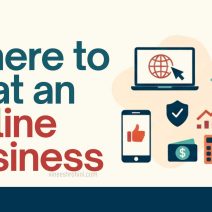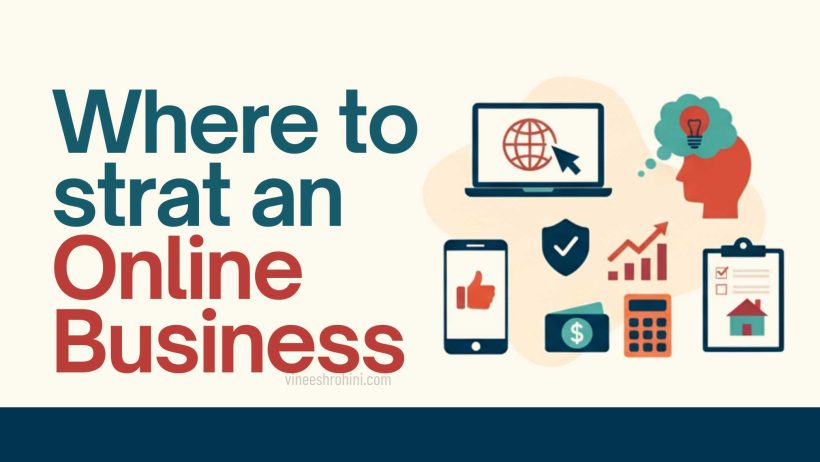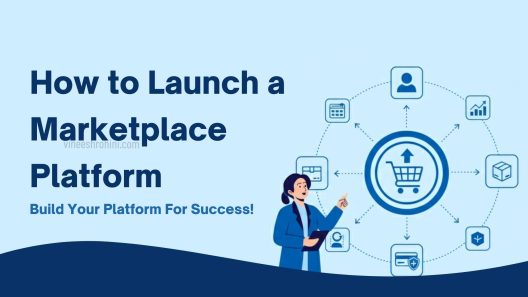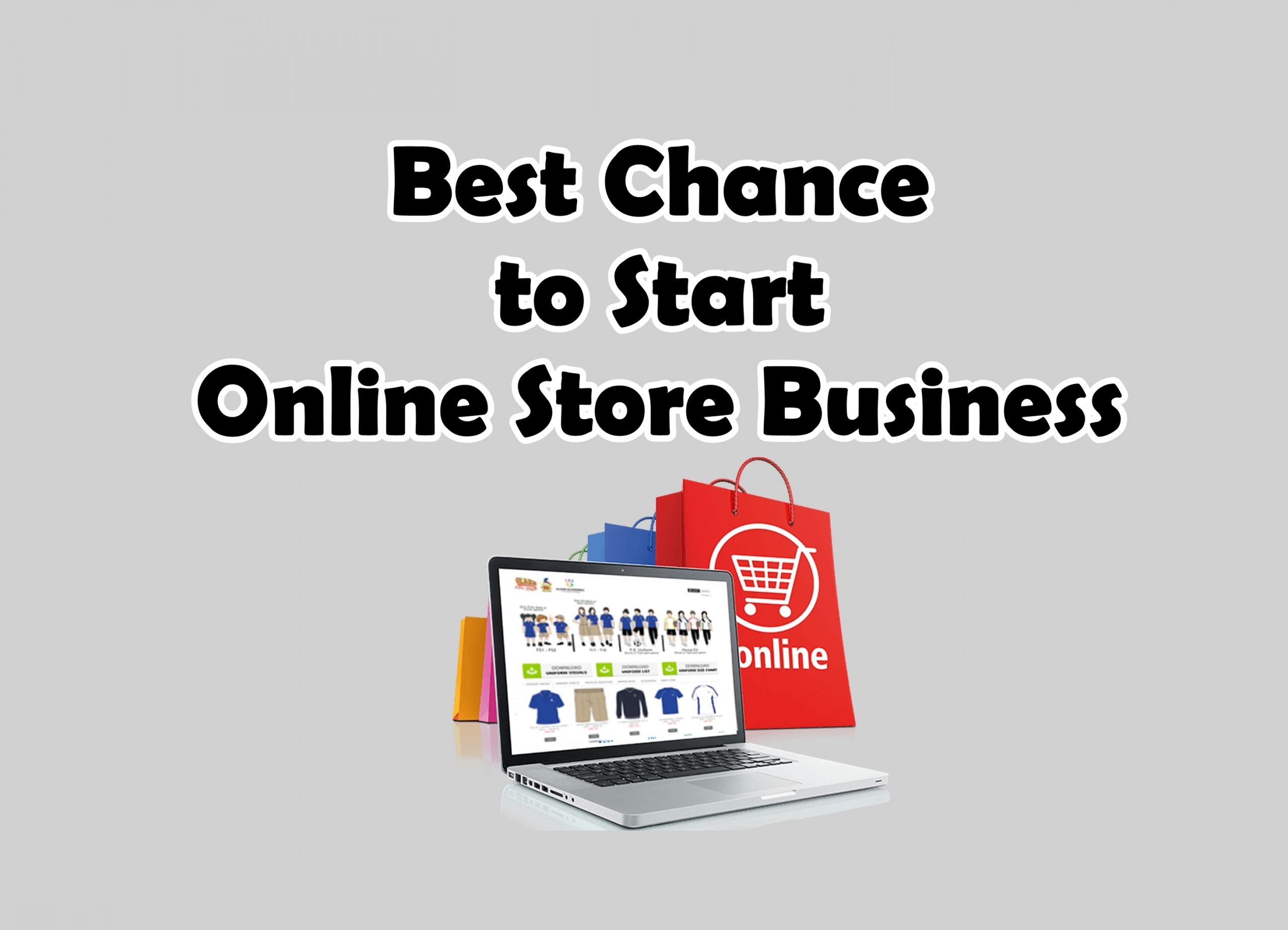Online Business : Starting an online business in 2025 is no longer just an option; it has become a necessity for ambitious entrepreneurs looking to capitalize on the growing digital economy. The shift towards digital platforms, e-commerce, and online services has created unprecedented opportunities for business owners worldwide. Whether you are aiming to start a side hustle or a full-time online venture, knowing where to start and how to navigate the online business ecosystem is critical.
Table of Contents
This Comprehensive guide will take you step-by-step through the process of launching your online business successfully, covering everything from market research to scaling, marketing, and revenue generation.
Understanding the Online Business Landscape in 2025

The global online business ecosystem has transformed significantly in recent years. Digital adoption has accelerated, and businesses of all sizes are moving online to reach global audiences. In 2025, online business opportunities span multiple sectors, including e-commerce, digital products, SaaS solutions, content creation, affiliate marketing, online education, and more. According to recent trends, keywords such as “start online business,” “digital entrepreneurship,” “e-commerce business ideas,” “work from home business,” and “passive income online” show growing interest and search volumes, reflecting the increasing demand for online business guidance.
The availability of advanced tools, automation platforms, and AI-powered solutions has reduced traditional barriers to entry. Entrepreneurs no longer need a physical storefront, large teams, or high upfront investment to start. With the right strategy, even a single individual with a laptop and internet connection can create a scalable and profitable business.
Step 1: Identifying Profitable Online Business Ideas
Choosing the right online business idea is the foundation of success. Here are some high-demand online business models in 2025:
- E-commerce Stores – Selling physical products online through platforms like Shopify, WooCommerce, and Amazon. Niche stores often perform better than general ones. Examples include eco-friendly products, fitness equipment, personalized gifts, and tech gadgets.
- Dropshipping – A low-risk business model where products are shipped directly from suppliers to customers. This eliminates inventory management, making it ideal for beginners.
- Print-on-Demand – Selling customized merchandise like T-shirts, mugs, and phone cases without maintaining stock.
- Digital Products – Offering software, templates, eBooks, stock images, and music. Digital products have high margins and can be scaled quickly.
- Online Courses and Coaching – Capitalizing on the increasing demand for skill development and professional learning. Platforms like Teachable and Kajabi simplify course creation.
- Affiliate Marketing – Promoting products or services of other companies and earning commissions on each sale.
- Subscription-Based Services – Providing recurring value through memberships, premium content, or SaaS solutions.
- Freelancing and Services – Monetizing skills such as web development, graphic design, digital marketing, content writing, and consulting through platforms like Fiverr and Upwork.
Also Read : Top Online Businesses : That Make the Most Money in 2025 – Comprehensive Guide
Step 2: Conducting Market Research
Before launching your online business, understanding your target market is essential. Market research helps identify customer pain points, preferences, demographics, and purchasing behavior. Key steps include:
- Using Tools for Market Insights – G Trends, SEMrush, Ahrefs, and social media analytics provide data on search volume, trending topics, and competition.
- Creating Customer Personas – A detailed profile of your ideal customer helps craft targeted marketing strategies. Include age, gender, income, interests, buying habits, and preferred communication channels.
- Competitive Analysis – Study competitors to identify gaps, opportunities, and best practices. Understand pricing, marketing tactics, and customer reviews to position your business effectively.
Step 3: Choosing the Right Business Model
Your business model determines how you generate revenue, manage operations, and scale. Consider these popular online business models:
- E-commerce – Sell products directly online.
- Dropshipping – Low-risk product sales via suppliers.
- Digital Products – Software, eBooks, and templates.
- Online Courses & Coaching – Sell knowledge and expertise.
- Affiliate Marketing – Earn commission by promoting other products.
- Subscription Services – Provide recurring premium content or services.
- Service-Based Business – Offer freelance skills or consulting.
Selecting a model aligned with your expertise, budget, and market demand increases the probability of success. High-ranking keywords: “best online business model 2025,” “profitable digital business models,” “how to make money online.”
Step 4: Building Your Online Presence
A strong online presence is critical to attract customers and establish credibility. Key components include:
- Professional Website – Use platforms like WordPress, Shopify, or Wix. Ensure it is mobile-responsive, fast-loading, and SEO-optimized.
- Social Media Channels – Insta, FB, LinkedIn and YT can promote products and engage audiences.
- Email Marketing – Building an email list allows you to communicate directly with potential customers. Personalized campaigns increase conversions.
- SEO and Content Marketing – Create blogs, videos, podcasts, and infographics to attract organic traffic and establish authority.
- Analytics Tools – G Analytics, Hotjar, and SEMrush help monitor traffic, user behavior, and conversions.
Buy Now : Launch Your Online Clothing Business : From Start to Success
Step 5: Selecting Technology and Tools
Technology simplifies operations, improves productivity, and enhances customer experience. Essential tools include:
- E-commerce Platforms – Shopify, WooCommerce, BigCommerce.
- Marketing Automation – Mailchimp, HubSpot, ActiveCampaign.
- Design & Content Creation – Canva, Adobe Creative Cloud.
- Online Courses & Learning Platforms – Teachable, Kajabi.
- Payment Gateways – Stripe, PayPal, Razorpay, Instamojo.
- Analytics & CRM – Zoho, Salesforce, Freshdesk.
Integrating AI tools like chatbots, personalized recommendations, and predictive analytics can further enhance efficiency and customer satisfaction. High-ranking keywords: “best online business tools 2025,” “digital marketing software,” “e-commerce tools for beginners.”
Step 6: Creating a Marketing Strategy
Marketing is the backbone of online business success. A strong strategy ensures visibility, engagement, and revenue growth. Key tactics include:
- SEO Optimization – Optimize your website with high-ranking keywords, meta descriptions, backlinks, and mobile-friendly design.
- Content Marketing – Use blogs, videos, podcasts, and infographics to provide value and establish authority.
- Social Media Marketing – Engage with followers, run paid campaigns, and collaborate with influencers.
- Email Marketing – Send newsletters, offers, and personalized campaigns to retain customers.
- Paid Advertising – GAds, FB Ads, and LinkedIn Ads help target high-intent audiences.
Step 7: Financial Planning and Budgeting
Proper financial planning ensures long-term sustainability. Steps include:
- Estimate Startup Costs – Website setup, marketing, tools, inventory (if applicable), and contingency funds.
- Track Expenses & Revenue – Use accounting software like QuickBooks, Zoho Books, or Wave.
- Understand Profit Margins – Digital products and affiliate marketing offer higher margins compared to physical product sales.
- Plan for Scaling – Allocate funds for marketing, technology upgrades, and expansion.
Step 8: Scaling Your Online Business

Scaling is essential to expand reach, revenue, and operational efficiency. Strategies include:
- Diversify Product Lines – Offer new products or services to attract more customers.
- Expand to New Markets – Use international shipping, multilingual websites, and global marketing campaigns.
- Automate Processes – Utilize AI tools, chatbots, and automated marketing campaigns.
- Invest in Paid Advertising – Boost visibility and customer acquisition through G Ads, FB Ads.
- Build Strategic Partnerships – Collaborate with influencers, affiliates, and other businesses.
Buy Now : Launch Your Online Store – Masterclass
Step 9: Overcoming Challenges in Online Business
Every online business faces challenges such as competition, cybersecurity threats, and fluctuating market trends. Solutions include:
- Strong Branding & Customer Trust – Provide exceptional service, transparent policies, and consistent engagement.
- Cybersecurity Measures – Use SSL certificates, secure payment gateways, and data protection policies.
- Adaptability – Keep up with market trends, AI advancements, and consumer behavior changes.
- Continuous Learning – Attend webinars, online courses, and read industry publications to stay ahead.
Conclusion

Starting an online business in 2025 offers unmatched opportunities to reach global audiences, generate income, and build a sustainable brand. By identifying profitable niches, researching target audiences, selecting the right business model, building a professional online presence, leveraging technology, implementing an effective marketing strategy, planning finances, and scaling strategically, you can establish a successful online business. While challenges exist, staying adaptable, customer-focused, and data-driven ensures long-term growth and profitability. With persistence, creativity, and strategic execution, anyone can transform an idea into a thriving online venture.
Disclaimer : This article is for informational purposes only and does not constitute professional business, financial, or technological advice. Readers should conduct their own research and make decisions based on their specific needs.







